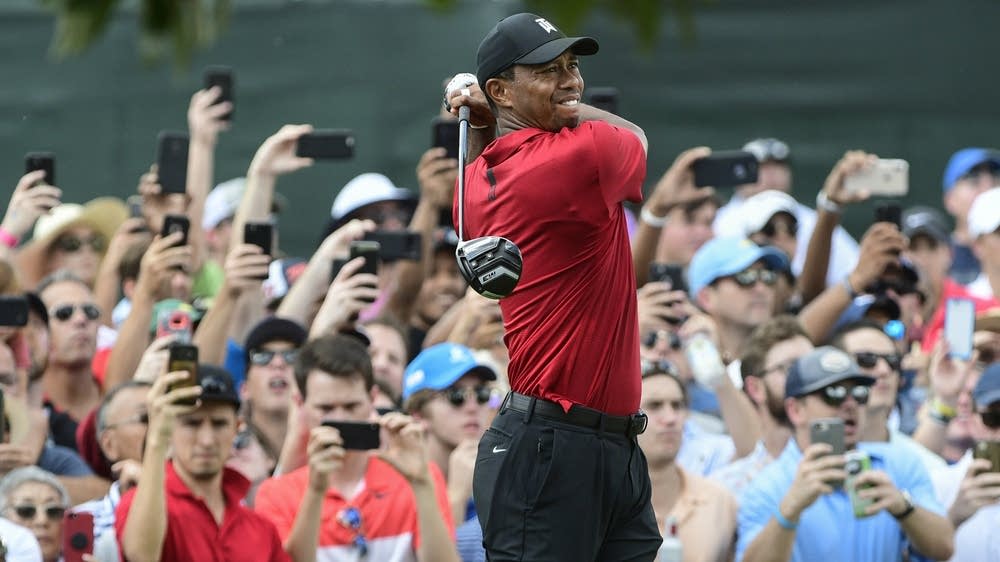
By Nancy Armour |
There’s no question that Tiger Woods’ win at the Tour Championship was remarkable, a defiance of age and physical frailties.
It wasn’t so long ago that golf was the least of his concerns. Whether he’d ever be able to sit or play with his kids without debilitating back pain, that was his focus. Now here he is, a winner on the PGA Tour for the first time in more than five years, with more victories and major titles sure to come.
“Just to be able to compete and play again this year, that’s a hell of a comeback,” Woods said Sunday night. “(Those closest to him) know how hard it was just to get back to playing golf again, and forget the elite level. Just be able to play golf again and enjoy being with my kids and living that life.
“And then lo and behold, I’m able to do this and win a golf tournament.”
It was amazing to see, for sure. But where does it compare with other comebacks?
Ben Hogan, Ted Williams, Muhammad Ali, Mario Lemieux, Monica Seles, Michael Jordan – all made returns that you can argue are every bit as extraordinary, maybe even more so, than what Woods just did.
Consider that:
Hogan was nearly killed in a head-on collision with a Greyhound bus in February 1949. His pelvis was fractured in two places and his collarbone and left ankle were also broken, and he developed blood clots in his legs during his recovery. He spent almost two months in the hospital.
Eleven months after the accident, Hogan returned to golf at the 1950 Los Angeles Open, where he lost to Sam Snead in a playoff. Later that year he’d win the U.S. Open at Merion, the fourth of his nine major championships.
Williams missed the 1943, ’44 and ’45 seasons while serving in the Navy during World War II. When he returned to the Red Sox in 1946, he hit what was then a career-high 38 home runs and won the first of his two Ameican League MVPs.
Williams also missed most of the 1952 and ’53 seasons because of the Korean War. He returned to play another seven seasons, and was the AL’s batting leader in two of them.
Ali couldn’t fight for nearly four years in the prime of his career, punishment for his refusal to be drafted. Yet his greatest fights came after his return, including the Rumble in the Jungle against George Foreman that made him the heavyweight champion of the world for a second time.
Hours after finishing his last radiation treatment for Hodgkin’s lymphoma in March 1993, Lemieux was back on the ice for the Pittsburgh Penguins, scoring a goal and adding an assist. He would finish the season as the NHL’s scoring leader and win his second Hart Trophy as the league’s MVP.
Seles was an eight-time Grand Slam champion and the top-ranked player in the world in April 1993 when she was stabbed in the back during a changeover at a tournament in Hamburg, Germany. The attack left deep psychological scars, and it would be more than two years before Seles would play again.
A month after her return, Seles reached the final of the 1995 U.S. Open but lost to Steffi Graf. In January, Seles won the 1996 Australian Open, her ninth major title.
Jordan retired after the Chicago Bulls’ first three-peat, sitting out most of the next two seasons. He returned in March 1995 – “I’m back” – and dragged the Bulls to the Eastern Conference semifinals, where they would lose in six games to the Orlando Magic.
Jordan played all 82 games and led the NBA in scoring each of the next three seasons, as the Bulls set a then-record for wins (72 in 1995-96) and completed their second three-peat.
None of this is meant to minimize what Woods just accomplished, or even to say it’s less impressive than what these other athletes have done. Maybe it’s enough to appreciate what he’s overcome simply for what it is.
“What I’ve gone through and what I’ve dealt with, I’ve gotten lucky, to be honest with you. I’ve gotten very lucky,” Woods said. “I’m not playing a full-contact sport. At 42 years old with a fused lower spine, that’s not going to happen.
“But in this sport, it can. … I’ve ground out a chance to win golf tournaments again.”
Part of the beauty of sports is watching human beings reject their limitations and achieve the impossible. It opens our mind to the idea that we, too, can triumph over our challenges.
That Woods has provided one more example of resilience matters far more than how it compares to those before him.
This article was republished with permission from the original author and 2015 Ronald Reagan Media Award recipient, Nancy Armour, and the original publisher, USA Today. Follow columnist Nancy Armour on Twitter @nrarmour.